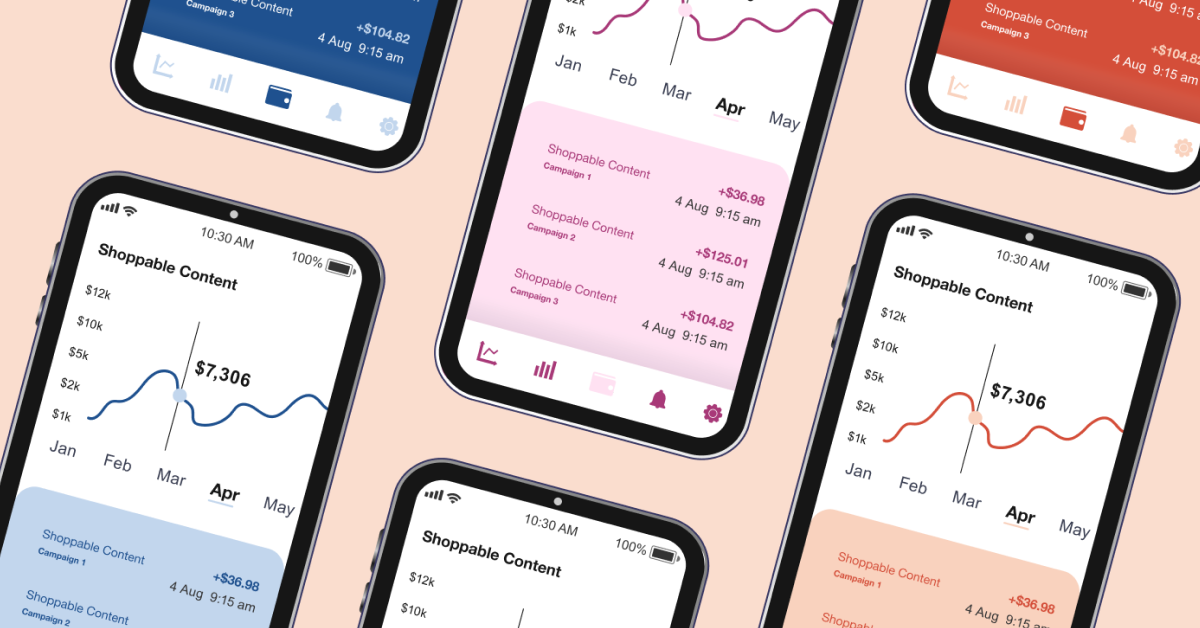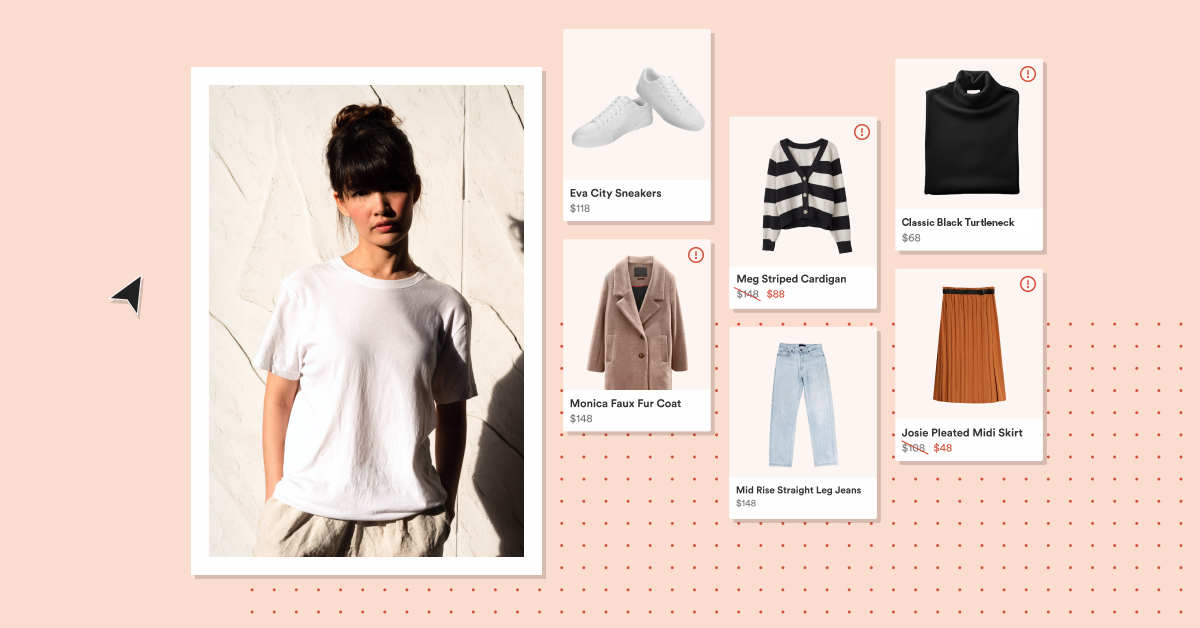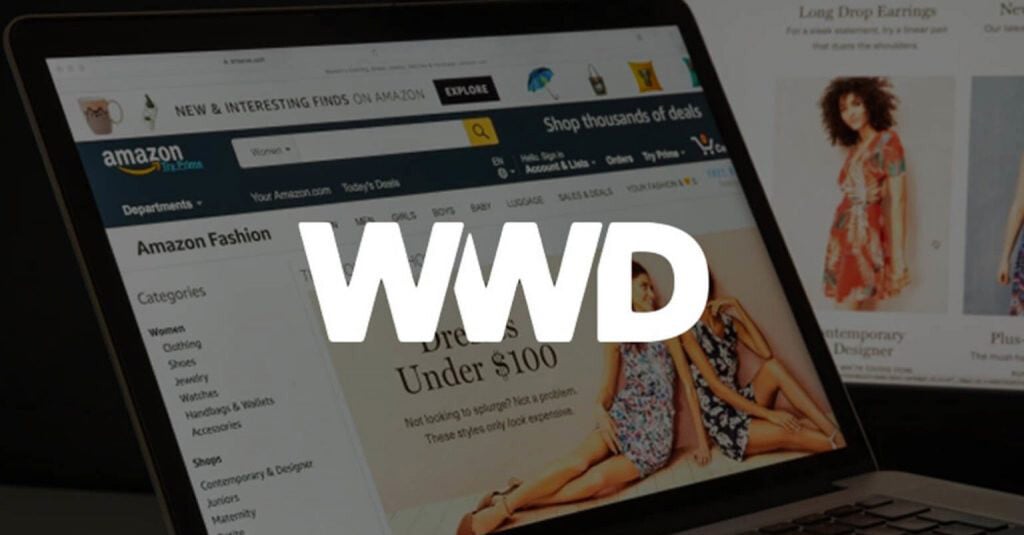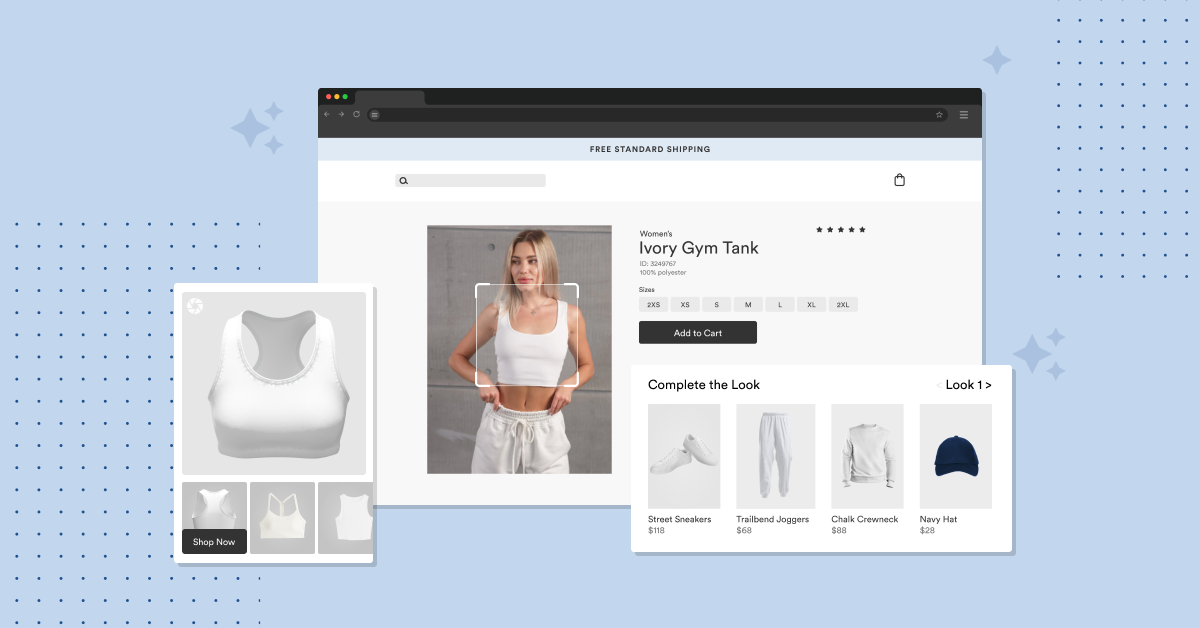5 min read
The 6 Key Performance Indicators in Ecommerce That Actually Matter
 FindMine
:
Aug 6, 2024 1:40:10 PM
FindMine
:
Aug 6, 2024 1:40:10 PM

As e-commerce evolves, the way we measure success must evolve with it. Key performance indicators in ecommerce have become more than just metrics; they're helping major retailers reshape the customer journey with more inspirational content.
Relying solely on traditional metrics like overall revenue or site traffic doesn’t tell the whole story. Performance tracking is no longer just about pushing products; it's about creating personalized, shoppable experiences at scale. It requires a more nuanced approach, one that considers the entire customer journey. Consumer attention is at a premium, and leveraging the right metrics isn't just beneficial—it's crucial for staying competitive and driving real growth.
For instance, while a traditional e-commerce strategy might focus solely on conversion rate, an AI-powered approach like FindMine's considers the entire customer journey. We're not just asking “Did the customer buy?” but “How engaged were they through their buying journey?” and “Did this engagement lead to discovering new products they wouldn't have seen otherwise?”
This shift in perspective is why it's more important than ever to understand and track the right key performance indicators in ecommerce.
Key Performance Indicators in Ecommerce
Some of the most popular metrics that should be tracked include:
- Conversion Rate
- Average Order Value (AOV)
- Customer Acquisition Cost (CAC)
- Customer Lifetime Value (LTV) & Retention Rate
- Inventory Turnover Rate
- Return on Investment (ROI)
Let's dive deeper into these six KPIs:
 1. Conversion Rate
1. Conversion Rate
Conversion Rate is the percentage of website visitors who actually buy something from your online store.
Conversion rate is one of, if not the most, fundamental metric for any online retailer. By understanding what percentage of your website visitors complete a purchase, you can get a clear indication of the effectiveness of your marketing, the strength of your product offering, and the overall user experience. Although conversion rates differ across industries, Shopify completed a recent survey of all Shopify stores in 2024 and found that the average conversion rate was 1.4% while a conversion rate of 3.3% would place you within the top 20% of Shopify performers.
Your conversion rate clearly indicates how satisfied your customers are with the service you have provided, so outfitting recommendations play a key role in a conversion's chances. By leveraging Gen AI to improve the overall outfitting experience, stores should expect an increase in their conversion rate.
 2. Average Order Value (AOV)
2. Average Order Value (AOV)
Now that the customer has completed a purchase, what strategies are working to get them to add more to their carts? Average Order Value (AOV) is the typical amount a customer spends each time they purchase from your store. Top retailers carefully track Average Order Value (AOV) and are always looking to optimize this key performance indicator in their ecommerce sales.
 3. Customer Acquisition Cost (CAC)
3. Customer Acquisition Cost (CAC)
Although it’s great to finally close a deal, have you ever considered how much money you had to invest to make it happen? Customer Acquisition Cost (CAC) is how much money you spend on marketing and sales to get one new customer to buy from you. Understanding how much it costs to acquire each customer is crucial to ensuring that your marketing efforts are efficient.
It is vital for retailers to look into best practices to continuously decrease their CAC, as these expenses have a direct impact on profitability.
 4. Customer LTV & Retention Rate
4. Customer LTV & Retention Rate
Once you’ve successfully won over a new customer, you must do your best to ensure this will not be the last time they purchase from you! To do this, you must look for insights to improve your Customer Lifetime Value (LTV) and retention rate.
Customer Lifetime Value (LTV) and retention rate are two metrics that provide similar insights into a company's long-term performance. While retention rate measures the percentage of customers who will be repeat purchasers, the LTV analyzes the total amount an average customer will spend at your online store.
A higher retention rate and LTV are often a clear indication of positive customer loyalty and overall customer experience. For comparison purposes, Metrillo completed a survey across E-commerce brands, and they determined the average retention rate to be 28.2%.
One powerful marketing comparison to do is to compare your CAC to your LTV. For your online sales to continue to generate profits sustainably, you must reach a point where LTV is greater than CAC, signaling that each customer acquired will spend more money on your products than you spent to acquire them.
Many industry experts believe a healthy e-commerce LTV:CAC ratio should be around 3:1. This ratio should be monitored, as any lower than 3:1 could mean your business's profitability is at risk. At the same time, a ratio that is too high could mean you are not investing enough in customer acquisition, meaning you could be missing out on other growth opportunities.
 5. Inventory Turnover Rate
5. Inventory Turnover Rate
Every retailer battles to find the perfect balance between ordering enough stock to meet ongoing demand and minimizing the amount of stock that they end up having to sell at a discount or write-off.
Inventory turnover rate measures how quickly you sell through your inventory on hand. A high turnover rate indicates efficient inventory management and healthy sales, while a low rate may signify overstocking or slow-moving products. Monitoring this metric helps you optimize inventory levels, reduce storage costs, and ensure the right products are available to meet customer demand.
![]() 6. Return on Investment (ROI)
6. Return on Investment (ROI)
Although we highly recommend keeping an eye on all the metrics mentioned above, only one can truly tell the whole picture about whether your investments are worth the time and effort… Return on Investment (ROI). ROI is simply the profit you make compared to the money you've spent.
Scaling Your Ecommerce Performance with Generative AI
Technology in the retail industry, particularly generative AI, is revolutionizing outfitting recommendations by offering scalable solutions that directly impact the six key performance indicators in ecommerce we've discussed.
FindMine's AI-driven outfitting technology addresses these crucial KPIs by leveraging advanced algorithms and machine learning to process vast product catalogs, understand customer preferences, and create personalized recommendations at scale. This allows retailers to:
- Conversion Rates and AOV: AI-driven upselling and cross-selling techniques, such as personalized outfitting suggestions, boost additional purchases, enhance conversion rates, and increase average order value (AOV).
- Customer Acquisition Costs: By automating the outfitting process, AI produces high-quality recommendations at scale and is more efficient than manual processes, decreasing acquisition costs. In an A/B test, FindMine proved that AI can provide on-brand product recommendations at an equal or higher quality than manual stylists.
- Customer Lifetime Value and Retention: Personalized AI-driven recommendations align with customer preferences and your unique brand, enhancing satisfaction and driving lifetime value (LTV) and retention.
- Inventory Management: Optimize inventory turnover with dynamic, stock-based recommendations. AI can dynamically adjust recommendations based on current inventory, ensuring all items get adequate exposure and boost turnover rates.
- ROI: Achieve positive ROI through cost-effective, high-quality outfitting at scale. AI's ability to affordably produce unique, tailored recommendations often leads to substantial returns. Evaluating revenue generated against implementation costs clearly demonstrates the technology's value.
By using AI-powered outfitting tools, retailers can dramatically scale their product discovery, customer engagement, and inventory management operations.
Elevate Your Ecommerce Strategy with FindMine
As we've explored, the landscape of online retail is rapidly evolving, and staying competitive means more than just keeping pace—it requires staying ahead of the curve.
But here’s the reality: Every moment you delay, competitors are gaining ground. They’re adopting AI-driven solutions, enhancing customer experiences, and reaping the benefits of increased conversion rates, higher AOV, and unparalleled customer retention. The future of ecommerce isn’t waiting, and neither should you.
Without AI-driven product recommendations, you're missing the opportunity to turn every product into a story, every page into an experience, and every customer interaction into a chance for inspiration. In a world where consumers are increasingly overwhelmed by choice, FindMine doesn't just help retailers offer products—it curates lifestyles for their customers. This is the difference between selling items and selling visions, between transactional relationships and emotional connections.
Consider the compounding effect of improvement across all your KPIs. A slight uptick in conversion rate, coupled with an increase in average order value, multiplied by enhanced customer lifetime value—suddenly, you're not just growing; you're scaling exponentially. This is the power of AI when applied strategically to ecommerce, and it's a power that FindMine puts at your fingertips.

Don’t wait until tomorrow to implement the strategies that could propel your business forward today. The time to act is now. Embrace the future, elevate your ecommerce strategy, and watch KPIs soar with the help of FindMine.

3 Key Reasons Your Complete the Look Strategy Is Failing
When I find a piece of clothing I love, I always look for inspiration for complementary accessories. For example, I might see a dress I love on a...

AI Styling Firm FindMine Scores Nearly $9M Series A
AI-driven styling outfit FindMine, one of LVMH’s La Maison de Startups, has raised $8.9 million in a Series A that closed just days ago, the company...


